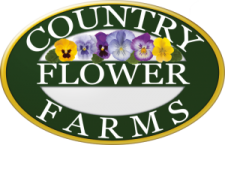Tips for what to do in your garden in the early spring (March and April):
- Clean up any debris left from the Fall such as leaves and branches.
- Apply Corn Gluten or an organic weed prevention in early March (if no Snow on ground)
- Gradually remove winter mulch as soon as you see signs of plants emerging from the soil.
- Cut back any perennials that weren’t cut back in the fall, but wait until new growth appears on those with woody structures such as Butterfly Bush, Caryopteris, Sage, Rue, Germander, Lavender, and Perovskia (Russian Sage). Cut these back to 14 – 18”.
- Cut down any seed heads leftover from the winter.
- Cut ornamental grasses down to about 6 inches before new growth begins. Do not cut down evergreen grasses such as Carex, Festuca or Helictotrichon. For evergreen grasses, use your hands to pull the dead foliage out of the crown.
- Limit pruning to removing dead wood and thinning branches to allow more light to reach the plant.
- Prune fall-blooming shrubs and trees. Wait to prune spring-blooming shrubs and trees until after they have flowered, we typically prune Spring flowering shrubs in late June.
- Put a handful of ground lime around the base of each clematis vine.
- Spray woody plants and shrubs with horticulture oil for protection from insects such as scale, lacebugs, aphids, mites, and hemlock woolly adelgid. This must done when the temperature is above 40 degrees and there are clear skies.
- Plant cool-weather vegetables such as peas in mid-march (if soil is workable). We usually plant our peas around Saint Patrick's Day.
- Mulching in early spring will help control weed seedlings. However, be careful not to cover any wanted seedlings, such as Verbena Bonariensis.
- Fertilize with organic fertilizers such as Plant Tone, Rose Tone, Flower Tone. If you feed the soil, the soil will feed the plants. Use Hollytone for acid-loving plants.
- Begin fertilizing Rose Bushes in April with ¾ to 1 cup of Rose Tone once a month until August. Begin a fungicide preventive spray program. An organic control for black spot is 2 tablespoons of baking soda, 1 tbsp horticulture oil and 1 teaspoon of dishsoap mixed in a gallon of water.

